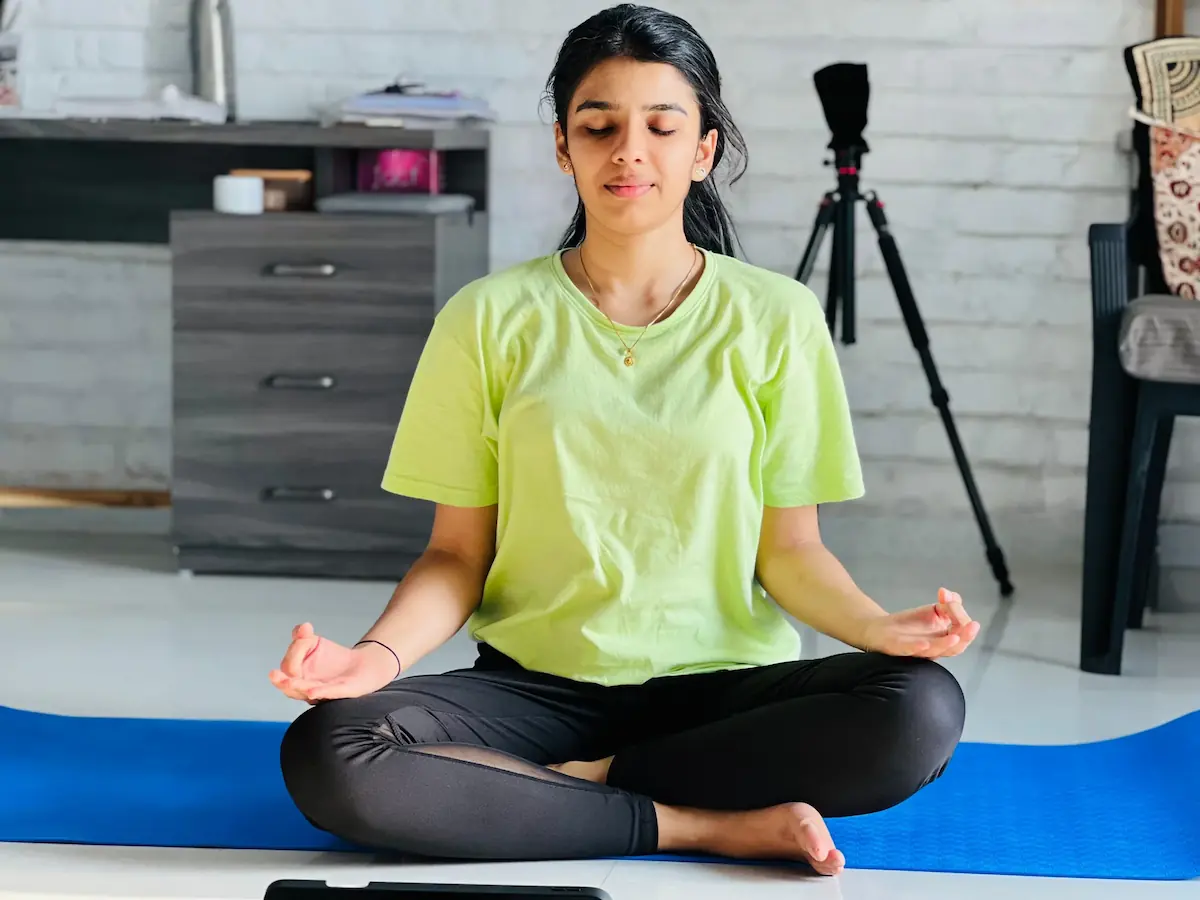Yoga – A Gentle Path to Headache Relief
Headaches and migraines can disrupt your entire day, from focusing at work to simply enjoying your time with loved ones. While medication may offer temporary relief, yoga provides a powerful, natural alternative. Practicing calming asanas at home can ease tension in the neck, shoulders, and spine common hotspots for headache triggers. Let’s explore five beginner-friendly yoga poses you can try today to soothe your system and reduce headache frequency.
Balasana (Child’s Pose)

How to do it:
- Kneel down with your big toes touching and knees wide apart.
- Gently sit back on your heels and extend your arms forward on the floor.
- Let your forehead rest on the mat and breathe deeply.
Benefits:
- Relieves neck and back tension
- Calms the nervous system and reduces stress
Precautions:
- Avoid if you have severe knee injuries or are pregnant.
- Use a cushion under your forehead for extra support.
Uttanasana (Standing Forward Bend)
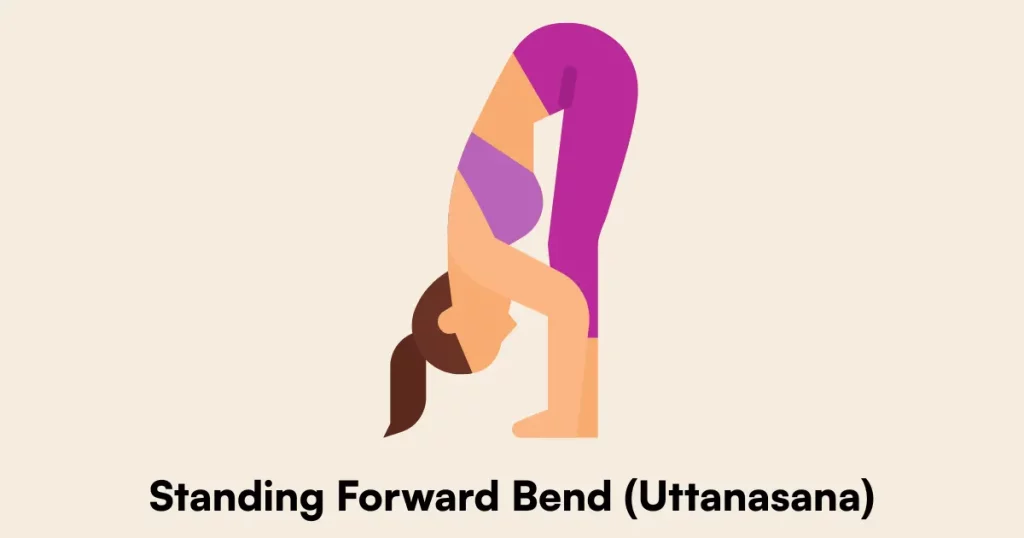
How to do it:
- Stand with feet hip-width apart.
- Bend forward from the hips, letting your arms and head hang freely.
- Keep a soft bend in the knees if needed. Hold opposite elbows for support.
Benefits:
- Boosts blood circulation to the brain
- Eases tightness in the neck and shoulders
Precautions:
- Avoid if you have severe back issues or high blood pressure.
- Use a yoga block under hands if reaching the floor is difficult.
Viparita Karani (Legs-Up-the-Wall Pose)
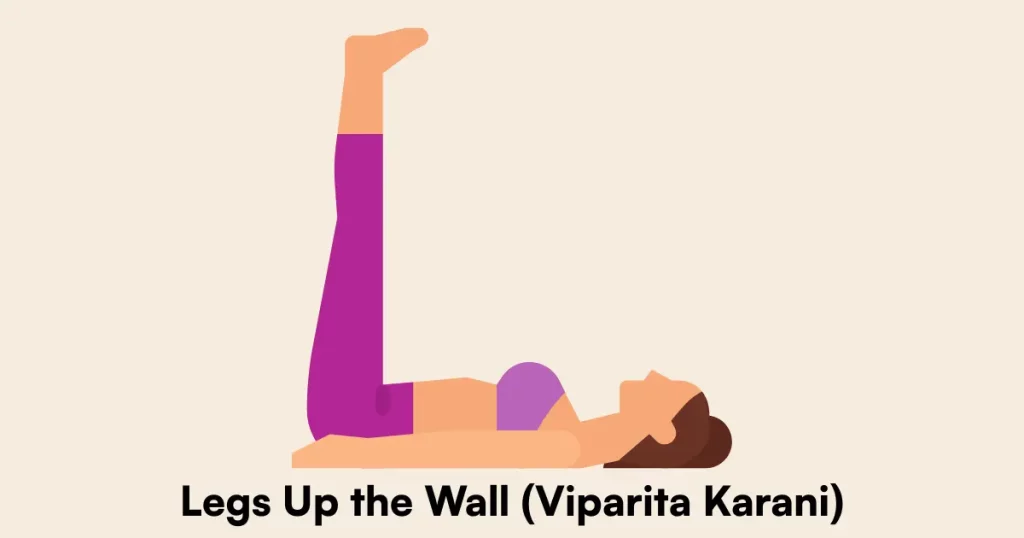
How to do it:
- Sit sideways next to a wall, then lie back and swing your legs up the wall.
- Keep your arms relaxed by your side, palms facing upward.
- Breathe slowly and stay for 5–10 minutes.
Benefits:
- Reduces fatigue and calms the nervous system
- Encourages circulation to the upper body and head
Precautions:
- Avoid if you have glaucoma or serious neck issues.
- Use a folded blanket under the hips for support.
Setu Bandhasana (Bridge Pose)
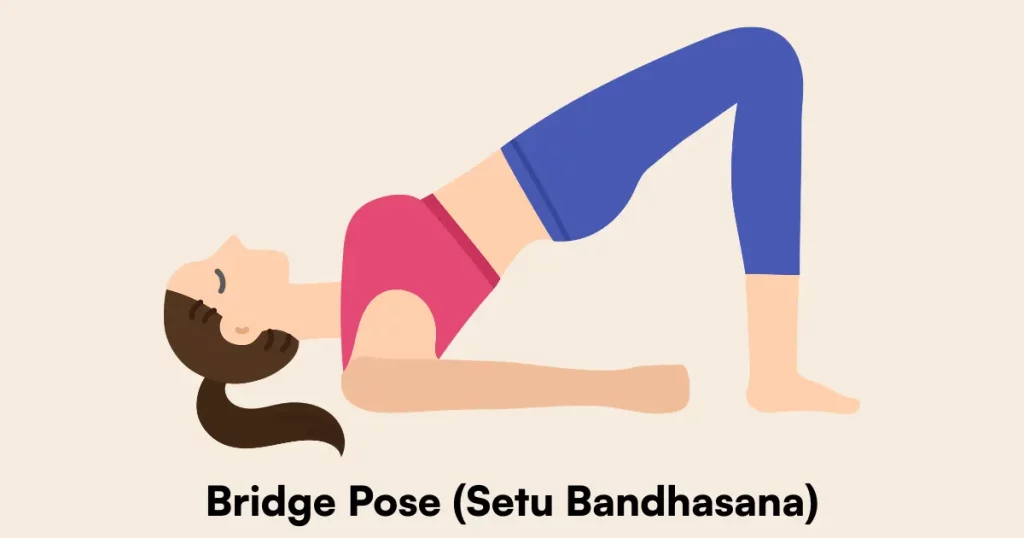
How to do it:
- Lie on your back with knees bent and feet flat on the floor, hip-width apart.
- Press your feet and arms into the floor and lift your hips up.
- Clasp your hands under your back or keep arms flat.
Benefits:
- Opens chest and neck to improve oxygen intake
- Stimulates thyroid gland, which may help hormonal balance
Precautions:
- Avoid if you have neck or shoulder injuries.
- Place a yoga block under your back for a gentler version.
Adho Mukha Svanasana (Downward-Facing Dog)
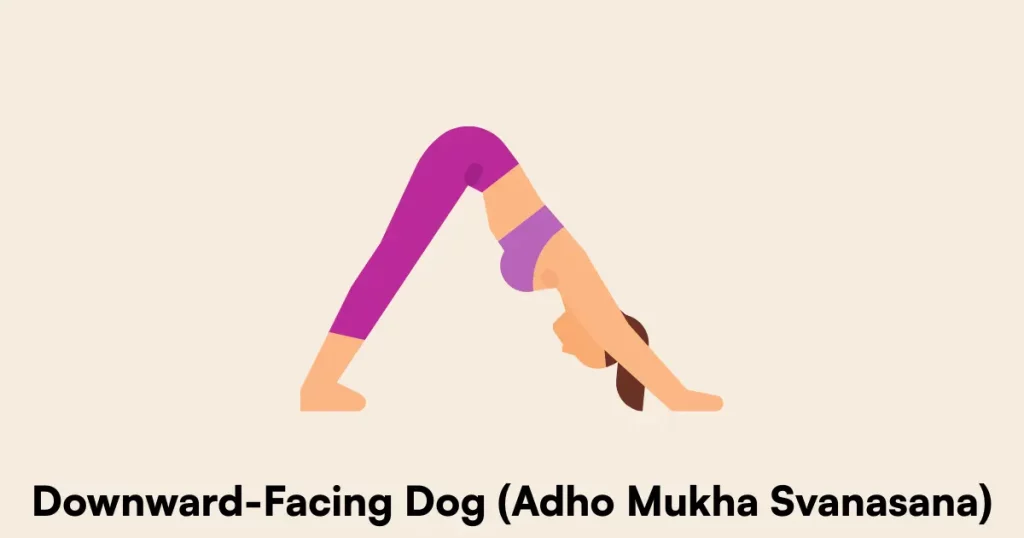
How to do it:
- Begin on hands and knees.
- Lift your hips up and back, straightening your arms and legs into an inverted “V.”
- Let your head rest between your arms, gazing at your feet.
Benefits:
- Relieves tension in the neck, shoulders, and spine
- Enhances blood flow to the brain and reduces anxiety
Precautions:
- Avoid if you have wrist or shoulder injuries.
- Keep knees bent slightly if hamstrings are tight.
Conclusion: Make Yoga Your Daily Headache Remedy
Consistency is key when it comes to yoga. These five poses, when practiced daily even for just 10–15 minutes can help relax your body, calm your mind, and reduce the frequency and intensity of headaches and migraines. Start slow, listen to your body, and over time, you’ll feel the benefits from head to toe.
FAQs: Yoga for Headaches & Migraines
Q1: Can yoga completely cure migraines?
Yoga helps manage symptoms and reduce frequency, but it may not be a standalone cure. Combine it with proper hydration, nutrition, and medical guidance for best results.
Q2: When is the best time to practice these poses?
Early morning or evening in a quiet, low-light space is ideal for maximum relaxation.
Q3: How long should I hold each pose?
Hold each pose for 1–3 minutes. In restorative poses like Viparita Karani, you can go up to 10 minutes.
Q4: Can beginners practice these poses safely?
Yes! All these poses are beginner-friendly. Just follow modifications if you have health conditions or injuries.
Q5: Should I avoid yoga during an active migraine?
If your symptoms are intense, it’s best to rest. Once the pain subsides, you can gently return to practice.

